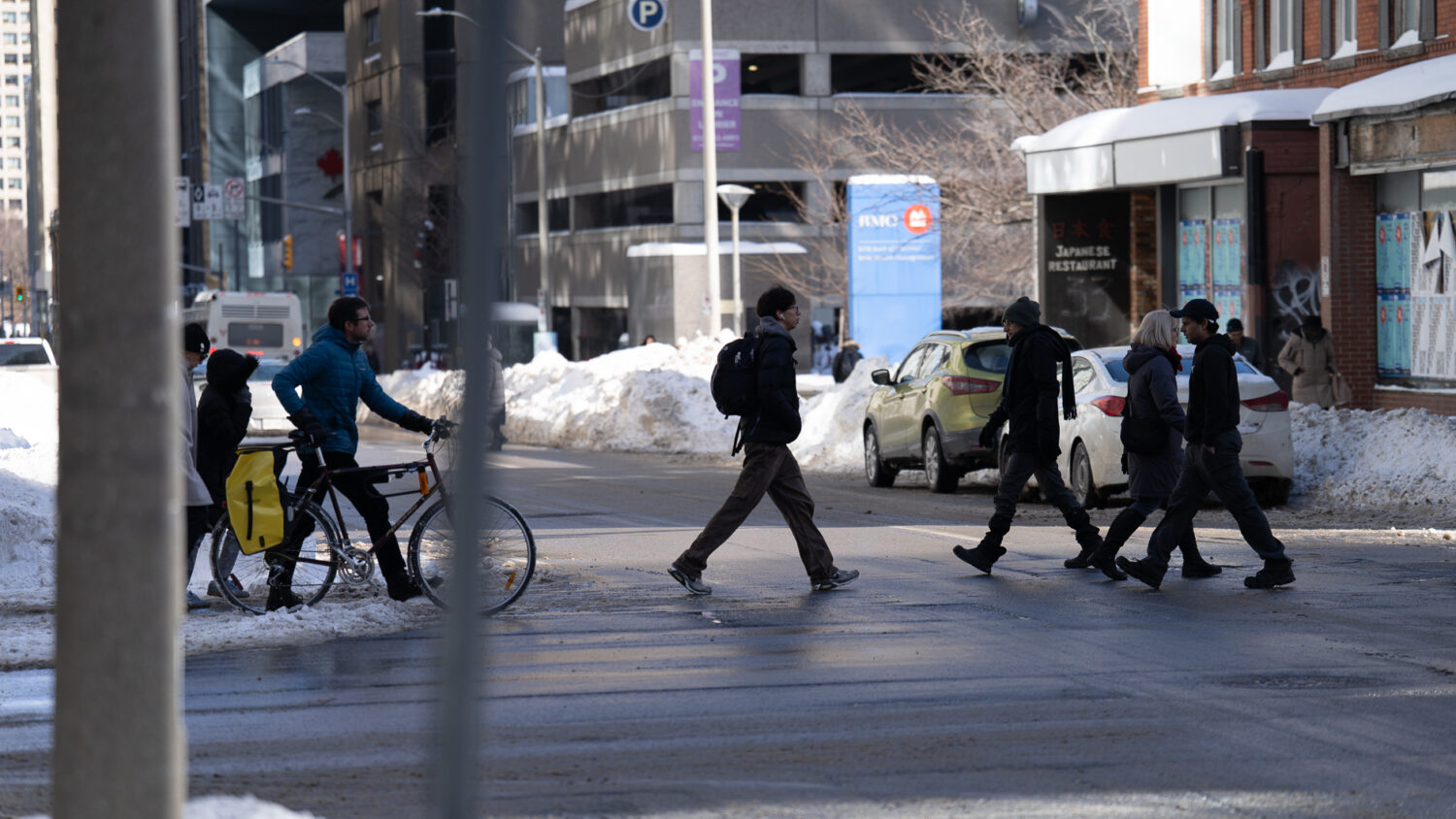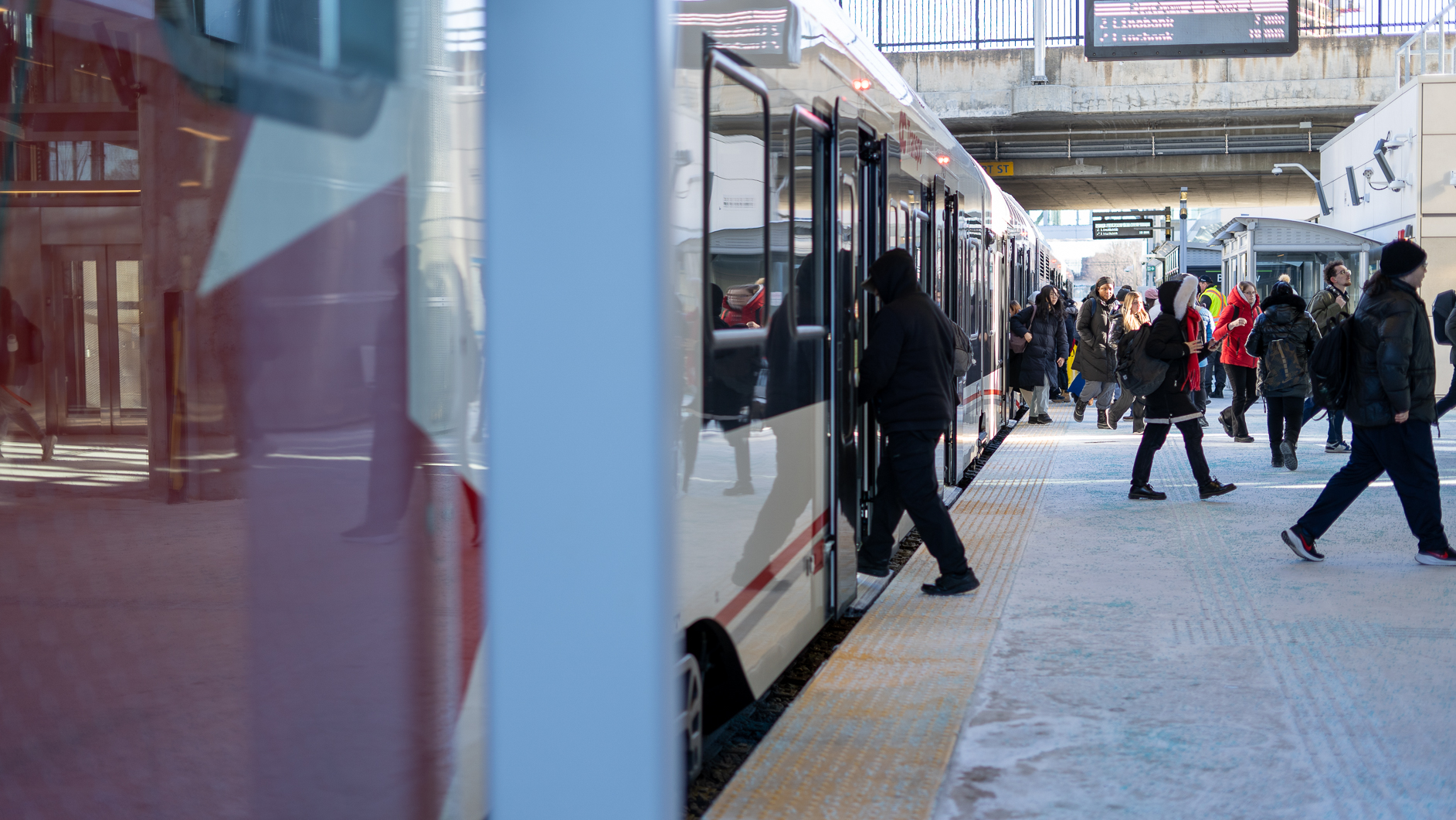UPDATED POST: This is a big moment for transportation in the City of Ottawa. The City’s draft Transportation Master Plan (TMP) outlines how the city proposes to move people and goods through 2046—and it’s now going to Committee and City Council.
At EnviroCentre, we’ve reviewed the plan closely, and our position is clear: it won’t get us where we need to be. The City has committed to ambitious climate goals, including achieving net-zero emissions by 2050. Sustainable transportation is a cornerstone of meeting those goals. But this Transportation Master Plan does not do enough to shift how Ottawans move around the city. Below, we outline what’s promising in the plan, what’s missing, and what changes we believe are essential. In the final section of this article, we have updated our recommendations based on what changed in the plan following public consultation.
The problem? Emissions and congestion are set to rise
The TMP predicts that by 2046, there will be 1.2 million more daily trips in Ottawa. Unless there are major changes to the plan and the City’s approach to transportation, most of these trips will be by car. That means more congestion, longer commutes, and higher emissions. Modelling estimates that average car trips could take 90 seconds longer due to increased congestion. That might not sound like much, but for drivers who take two car trips a day that would add up to 18 extra hours in traffic per driver per year.
Some believe that the answer to congestion is more roads or wider roads. But decades of evidence show that this only leads to more driving. This phenomenon—known as induced demand—has been well documented. (Watch this 70-second video to learn more.)
The solution? Mode shift
The only viable path forward is to make it easier for people to get around without relying on single-occupancy vehicles. That means shifting more trips to transit, cycling, walking, and carpooling.
Ottawa’s Official Plan and Climate Change Master Plan both identify a critical goal: 50% of all trips should be made by sustainable transportation.
The final plan makes it clear that 50% is the target, but this plan alone will not get us there. The proposed investments—$2.2 billion in transit (plus $8.3 billion that would need to be entirely paid for by other governments for O-Train extensions), $1.1 billion in road projects, and just $80 million – update – make that $350 million in walking and cycling infrastructure over the full 20-year horizon—fall short.
According to the City’s own modelling, these investments would only increase sustainable mode share to 48%, missing the 50% target. That’s billions of dollars spent and still short of our most basic sustainability commitments.
Mode shift can happen—but not without a plan
The TMP suggests that “mode shift is difficult to achieve in any city.” While that can be true, it’s also a bit misleading. Many cities are making efforts that are paying off:
- London, UK has dramatically reduced car use and increased cycling through investments in protected infrastructure, congestion charges, and low-emission zones.
- Victoria, BC saw a 7% increase in regional sustainable transportation mode share between 2017 and 2023, thanks to bikeways and pedestrian networks.
- Even in Ottawa, cycling mode share has doubled since 2011, with the introduction of protected cycling facilities.
Mode shift can be achieved. But it does require dedicated effort, funding, and supportive decision-making.

What’s missing from the Transportation Master Plan?
The TMP acknowledges that to meet mode shift goals, “additional investments in transit, active transportation and travel demand management would be required,” but it doesn’t say what, when, how, or whether those investments will be made.
This phase of the TMP is where capital investments are made—funding for hard infrastructure like train tracks, stations, roads, bike routes, and sidewalks. But we know that building a new sidewalk or train line doesn’t always mean people will change their habits or patterns. For more people to shift to taking transit, increasing hours of service will be vital.
This plan assumes that transit service hours will be added, but only to accommodate growth and when capacity is exceeded. That means the bus in your neighbourhood won’t arrive more frequently unless more people are using it. But the best way to get more people using transit is to provide more service hours. We cannot wait for buses to fill up to make them more frequent when making them more frequent is what it takes to get people on board. Overall, this plan is not enough to make transit a reliable alternative to driving.
Equally important are investments in “soft infrastructure”:
- Meaningful, inclusive engagement to understand residents’ needs, and a commitment to acting on that input
- Education and encouragement to support behaviour change
- Thoughtful application of the City’s equity and inclusion lens
- Research and data collection to inform decision-making
There are also proven policy tools that support sustainable transportation. Ottawa’s Energy Evolution strategy points to several: more frequent rapid transit, car-free zones downtown, congestion charges, EV-only areas, and higher parking fees.
While some of these fall outside the traditional scope of a capital plan, the lines are not always clear. If park-and-ride lots are eligible for capital funding, why not bike share systems?
The TMP is where most of the City’s transportation funding decisions are made. If this plan doesn’t include what’s needed to meet critical climate and equity targets, it must be revised. As urban planner Brent Toderian says, “The truth about a city’s aspirations isn’t found in its vision. It’s found in its budget.”
The TMP is the time and opportunity to make sure that money is allocated in a way that will achieve the city’s goals and support our communities.
Our recommendations and reactions
To align the TMP with the City’s climate goals and the needs of its residents, EnviroCentre recommended that the final Transportation Master Plan included five key things. We’ve updated our recommendations with reactions to the final plan:
- A clear commitment to meeting the City’s sustainable transportation targets: This TMP doesn’t meet the targets, and it is clear that the city is responsible for doing more. When the TMP is updated in 5 years, it will need to make a larger leap in the right direction.
- Dedicated, reliable funding for walking, cycling, transit, and carpooling: There are significant investments in walking, cycling, and transit in this plan, but it still falls short. To meet mode shift goals, there needs to be greater and faster investment in sidewalks, pathways, cycling facilities, and speeding up buses. Not only are these projects helping shift trips from cars, but they are less expensive to build and maintain compared to roads, meaning our money can do more: active transportation projects cost just $1.6M per kilometre while road projects cost $23.5M per lane km.
- Regular data collection and transparent reporting on mode share progress: The City has indicated that this will happen, and we are happy to hear it. It is possible to identify trends, evaluate what is working (and what is not), when data is collected and shared. Otherwise, important decisions are being made without enough information.
- Greater attention to climate and equity outcomes, including a clear analysis of GHG implications for different scenarios: The final plan only presents the GHG implications of the priority network compared to business-as-usual. It does not show different scenarios or compare to what is recommended in Energy Evolution (the City’s plan to meet its GHG targets).
- Stronger collaboration with other levels of government to support tools like congestion pricing and parking reform: This plan does not include this, and we maintain that it should. Transportation is a system and should be planned like it with consideration for these types of factors. The Transit Long Range Financial Plan must address all of the tools that can be used – immediately or with changes from other levels of government – to make mode shift happen.
Our position
EnviroCentre believes that transportation is one of the most powerful levers Ottawa has to reduce emissions, improve quality of life, and build an inclusive and connected city. The current draft of the Transportation Master Plan does not go far enough to make the shift to sustainable transportation.
We urge Committee and Council to strengthen the plan—and back it with the funding, service, and policy decisions needed to meet our climate and equity goals.
There’s still time to have your say!
Here is how to have your say:
- Email your councillor and the mayor and encourage them to commit to meeting mode shift targets.
- You can view the agenda, watch, or sign up to delegate at the Public Works and Infrastructure Committee meeting on June 26.
- The Final Council vote is expected on July 9, so reach out early to influence the outcome.
Author: Cassie Smith, Strategic Lead, Transportation
Original post date: May 6, 2025. Updated on June 24, 2025.
